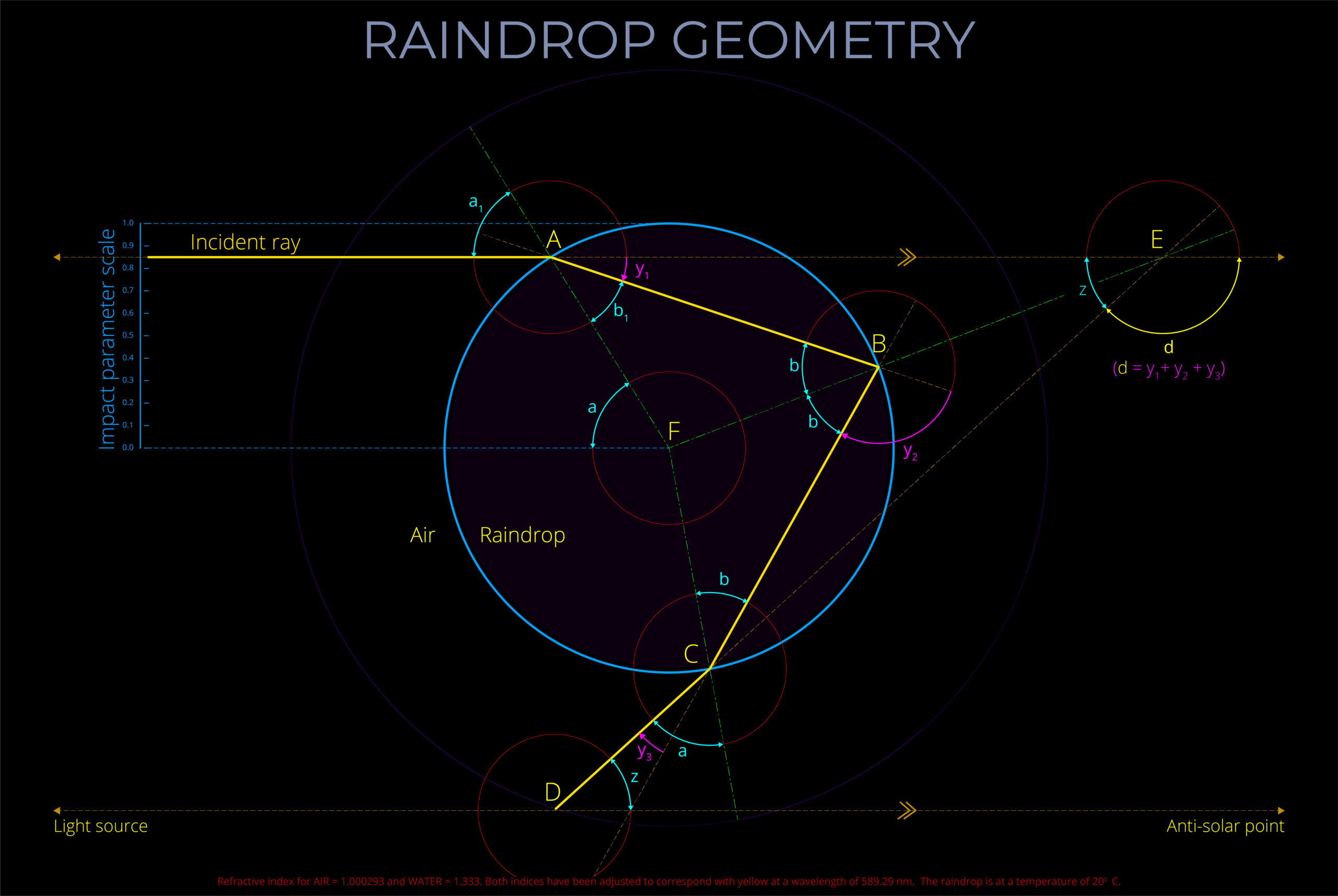The viewing angle of a rainbow is the angle between a line extended from an observer’s viewpoint to the bow’s anti-solar point and a second line extended towards the coloured arcs of its bow.
- Viewing angle, angular distance and angle of deflection all produce the same value measured in degrees.
- To locate the viewing angle as you look at a rainbow, trace two lines away from your eyes, one to the anti-solar point (the centre of the rainbow) and the other to one of the coloured arcs of the rainbow. The viewing angle is between those two lines, which intersect within the lenses of your eyes.
- To establish where the anti-solar point of a rainbow is, imagine extending the ends of the bow until they meet and form a circle. The anti-solar point is right in the middle and is always below the horizon.
- The coloured arcs of a rainbow form the circumference of circles (discs or cones) and share centres at their anti-solar point.
- The viewing angle is the same whatever point is selected on the section of the circumference of the circular arcs of the rainbow visible above the horizon.
- The viewing angle for a primary bow is between approx. 40.70 and 42.40 from its centre. The exact angle depends upon the rainbow colour selected.
- The viewing angle for a secondary bow is between approx. 50.40 and 53.40 when you are looking at its centre.
- The viewing angle can be calculated for any specific colour within a rainbow.
- The centre of a rainbow is always on its axis. The rainbow axis is an imaginary straight line that connects the light source, observer and anti-solar point.
- Most incident rays striking a raindrop will follow paths that place them outside the viewing angle. The resulting deflected rays pass by an observer and play no part in their observation.
- The viewing angle for all rainbows is a constant determined by the laws of refraction and reflection.
- The elevation of the Sun, the location of the observer and exactly where rain is falling are all variables that determine where a rainbow will appear.
Viewing angle, angular distance and angle of deflection
- The viewing angle as described above is a measurement taken from an observer’s point of view and conceives of a rainbow as a three-dimensional object in the real world.
- The viewing angle is the angle to which an observer looks regardless of whether they look towards the top of a rainbow to see a specific colour or sideways to look at the same colour near the horizon.
- Angular distance refers to a measurement on a ray-tracing diagram that represents a rainbow as a two-dimensional object.
- Angular distance measures the same angle as the viewing angle so between the rainbow axis and the position of any specific rainbow colour as it appears on the drawing.
- The angle of deflection also refers to a measurement on a ray-tracing diagram. It takes the same measurement but at a different intersection of lines.
- The angle of deflection measures the degree to which a ray striking a raindrop is bent back on itself in the process of refraction and reflection.


